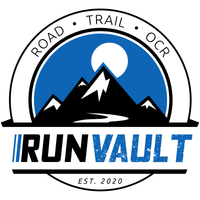9 Things everyone should know about Trail Running

By Jamie Hunter
When my running coach 3 years ago suggested I run some trails to strengthen the body for an obstacle race, I was at first hesitant and questioned this advice. What can an off road trail offer me that my suburban streets with rolling hills and fast flat stretches of tarmac can’t? He didn’t elaborate too much, instead allowed me to investigate myself and draw my own conclusions on trail running. This was over 3 years ago and I’ve never looked back.
Here are my 9 top tips and advice for anyone wanting to try something new in their exercise program, exploring trails.
It’s not as hard as what you think
Ok well let me elaborate. A run or exercise session is only as hard as the effort you put in. Although trails can present you with steep ascents and descents and some very uneven and technical goat tracks, a lot of trails are easy rolling fire trails connecting creeks, parkland and often spectacular views. The ground is softer underfoot so your impact to the ground with each step is more cushioned than a concrete sidewalk. If you’re just starting out, choose some easy trails close to home and keep your pace comfortable to get a feel of your new running experience.
Everyone is friendly, you are guaranteed to make new friends
I personally have developed long lasting friendships since been introduced to trail running. It is an amazing community and the positive influence brought into your life by these people can only impact your life in a good way. If you are less adventurous and prefer to explore trails with other people, there are plenty of running clubs across the globe that would welcome you to the world of trail running. Social media is a great place to start in your search where a wealth of advice can be gained as well.
Muscles will hurt you didn’t know you had
Trying to develop a set cadence and comfortable rhythm on a trail can be difficult. Your whole body is working, switchback after switchback (a word used for a sharp turn in a trail) jumping over logs and across wet or dry creek crossings. Running downhill you may look like a dodo trying to fly with your arms out wide flapping about to keep your balance and avoid falling. Take it easy for the first few runs so your body and legs can adjust to the new movements. Be sure to recover well afterwards with electrolytes and good food.
You will never impress your road running friends with strava split times
However you will impress them with your elevation profile! The elevation gain on a run is the amount of vertical gain you have acquired over a set distance. A 10km trail run can be more taxing on the body with a 500m elevation gain than a 10km flat city loop. Your pace per kilometre will be significantly lower but your strength will improve and a profound sense of accomplishment is felt knowing you’ve just climbed some hills you previously didn’t think possible. Try to not focus so much on how fast or slow you ran that last kilometre, instead take in everything nature and its surrounds is offering you.
Running in the rain is a great experience, running through a storm is dangerous
Contrary to Homer Simpson’s advice, protecting yourself under the canopy of a large tree during an electrical storm is not a good idea. There have been many occasions the heavens have opened up on my running buddies and I whilst out on a run. When a storm hits, don’t risk it and cut your run short. There is a risk of lightning striking and starting a fire which puts you and others at risk.
If rain is forecast, it truly is a wonderful experience running through a national forest with the rain coming down through the trees. The sounds and smell of the rain, along with the feeling of the pure clean water splashing on your skin is as refreshing as you can imagine.
Check the weather forecast before venturing out on trails and pack appropriately for predicted weather. Just be sure to have a towel and change of clothes or something warm to wear when you stop.
It’s ok to walk the hills
Top athletes across the world can be seen walking long hills up mountainsides during training runs and races, so don’t get disheartened if you need to drop it back to a walk when the trail starts to climb. As you get more experienced, use hiking uphill to your advantage which helps preserve energy on longer runs and races. You can also use this time to refuel with food and drink while on the go.
You may need to buy trail specific running gear
The “I’ll be back in an hour” last words when leaving the front door of home for a suburban run is a thing of the past. Sure, you can hit the trails in your road running shoes and your active wear you frequent the gym with. Out on trails, there isn’t the luxury of a water bubbler every few hundred metres or pay pass to swipe your debit card for a snack at a café. Not to mention the rocky terrain and uneven ground that is slippery and hard to navigate.
Specific trail running shoes would be my first recommendation. They usually come with more stability and support than road shoes for the uneven ground, along with a more aggressive tread pattern to prevent slips and falls.
A running pack to put on your back with a bladder for fluids and pockets to hold food and supplies is recommended for longer trail runs. A couple of hours on the trails can go quite quickly, so it’s important to carry electrolytes, water and foods to drink and eat so your time on the trail is enjoyable and beneficial, not one you want to quickly forget.
It’s fun, therapeutic and addictive
One of my first trail runs was at night, with a headlamp and about 20 people I didn’t know. We set off into the national park and ran through trails for one and a half hours I never imagined I would run, or could run for that matter. I was at the back of the pack and was in awe of how strong and free everyone else looked on their feet. By the end, my new trail shoes were covered in mud and shins were scratched from brushing against low lying weeds and branches. My thoughts were humbled and grounded. I drove home that night exhausted with two thoughts. How did I survive and when can I do this again!
Now I’m not saying you need to be thrown in the deep end like I was, my point is your comfort zone is guaranteed to be expanded, your mental health will improve, your needs and wants change for the better. The immediate benefits of being within untouched surrounds are noticeable and lasting.
Be safe and plan your trip
Very few of us have the luxury of having kilometres of trails just outside our front door, so more often than not we are in our car driving out of town to a remote location for a trail run. With this in mind it’s very important to plan your trip for many unexpected outcomes. Weather can change at any time, or you can simply take one or two wrong turns on a trail. When every tree and dirt track look the same it can be difficult to find your way back. Here are my must haves when out on the trails. – a fully charged phone that has good network coverage -electrolytes, water and food to last at least twice as long as you plan on being out there -First Aid kit including compression bandage, emergency blanket and whistle -A GPS watch that tracks your run -maps.me or other suitable app that shows the local trails
Be sure to let your family or friends know where you are going and when you plan on returning.
Enjoy your experiences and I hope to see you out there one day.


Leave a comment